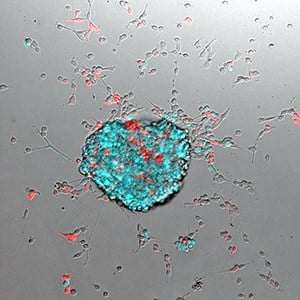Intratumoral heterogeneity and subclonal co-operation

Widespread intratumoral heterogeneity in human cancer has become a prevalent theme in high-throughput sequence analysis of tumour specimens, with critically important implications for the success of therapeutic targeting.
Less attention has been given to the functional consequences of this subclonal diversity and the interactions between distinct tumour subpopulations.
We have utilised paediatric glioblastoma (pGBM) and diffuse intrinsic pontine glioma (DIPG) as cancer types with a relatively low mutational burden, yet a high degree of heterogeneity, and developed a methodology to isolate genotypically and phenotypically distinct subclonal compartments with stem-like properties for mechanistic studies.
We have evidence that subclonal diversity is selected for, both temporally and spatially, due to co-operative interactions between these subpopulations which enhance tumorigenic phenotypes en masse.
Understanding how these subclones interact will be a key requirement in order to maximise patient benefit from existing treatment options as well as developing therapeutic novel approaches aimed at disrupting these interactions.
Although intratumoral heterogeneity may be severely limiting the effectiveness of existing treatments, understanding and disrupting co-operative interclonal communication provides a novel avenue for future therapeutic development.
We anticipate devising functionally-based strategies uniquely aimed at these processes which may be rapidly incorporated into clinical trials for children with these otherwise incurable tumours.